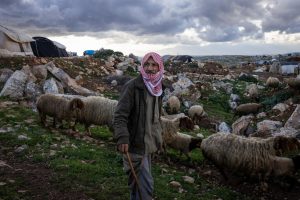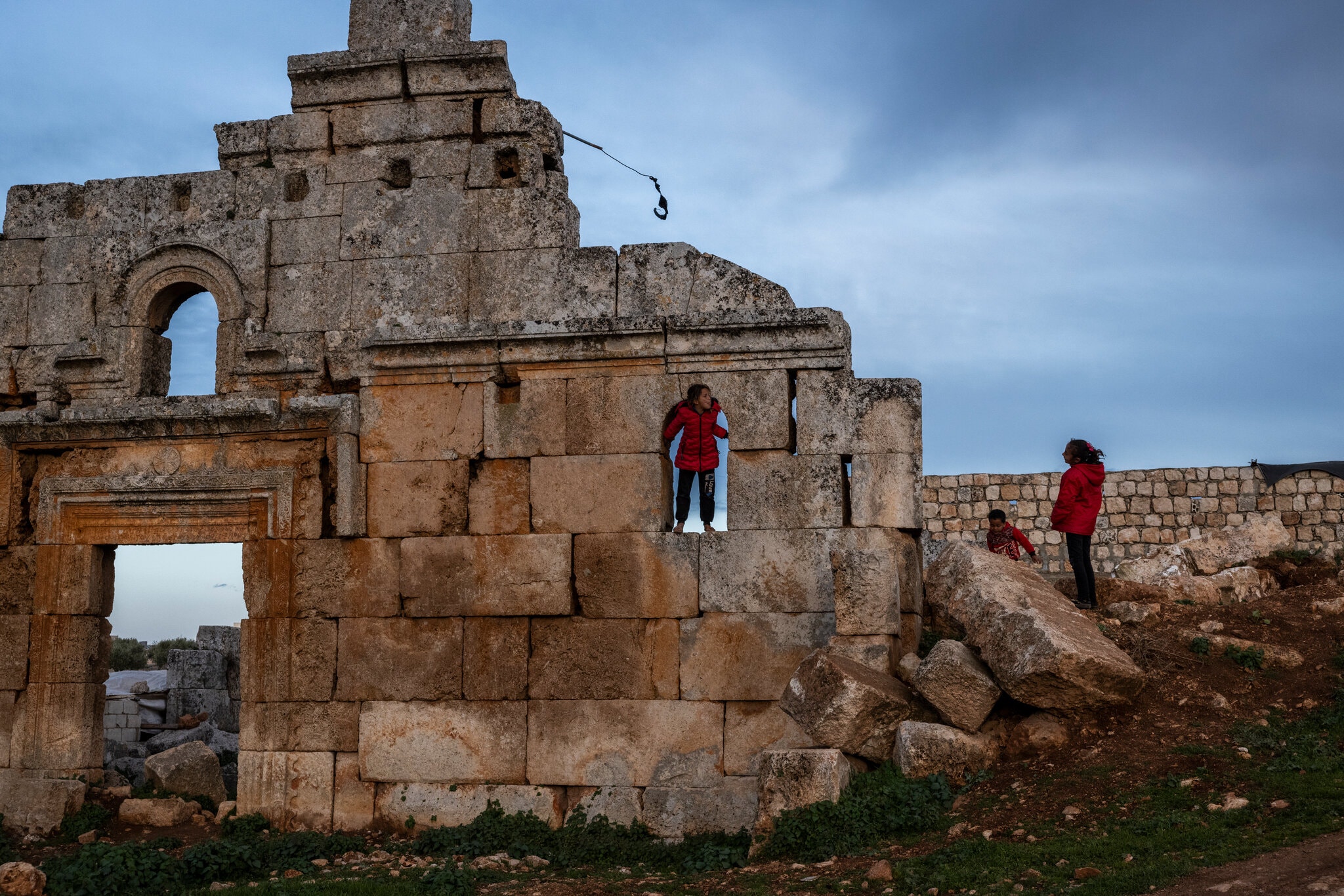(The New York Times)- As the sun set, children in dirty clothes and battered shoes herded sheep past the towering stone walls of a Byzantine settlement abandoned more than 1,000 years ago, leading them into an ancient cave nearby where the animals would spend the night.
Laundry hung near the semi-cylindrical wall of a ruined, centuries-old church. Vegetables grew between the remnants of two rectangular doorways ornamented with carved leaf patterns. Scattered about were giant cut stones from what had once been an extensive town.
It was here, at the vast archaeological site of al-Kfeir, Syria, where Abu Ramadan and his family sought shelter more than a year ago after fleeing a Syrian government assault.
They’ve been here ever since.

Abu Ramadan, 38, said he cared little for the site’s history as a trading and agricultural center, but appreciated the sturdy walls that blunted the wind and the abundance of cut stones that a family who had lost everything could salvage to piece together a new life.
“We built these from the ruins,” he said, pointing to a chicken coop and wood-burning stove. “We, too, have become ruins.”
As Syria’s 10-year civil war has displaced millions of people, families like Abu Ramadan’s have sought refuge from a modern war behind the walls of dozens of ancient villages sprinkled across the hills of the country’s northwest, a region still out of the control of President Bashar al-Assad’s government.
Since their original owners left them between the eighth and 10th centuries, these ruins have remained in remarkably good condition for more than 1,000 years, their stone structures largely withstanding the passing of empires and battering by the wind and rain.
But Syria’s current conflict has posed new threats to these sites with their columnated churches, multistory homes and elegant bathhouses. Their facades are now marred by bullets, their pillars shattered by airstrikes and their limestone walls sought out for protection by soldiers, rebels and jihadists battling for the country’s future.
Millenniums of human habitation have left Syria strewn with historical sites that date to Hellenistic, Roman, Byzantine and Ottoman eras. UNESCO, the United Nations cultural agency, has designated six World Heritage sites in Syria, including, in 2011, the ruins in the northwest, called the Ancient Villages of Northern Syria.
The use of these sites as informal refugee camps, archaeologists fear, presents a formidable threat to their future as the families add new walls, drive in tent posts and cart off stones.
“The walls protect us from the wind, the cold and everything else,” said Abdulaziz Hassan, 45, whose family lives in a tent inside the remains of the 1,800-year-old Temple of Zeus Bomos near the village of Babuta.
Mr. Hassan, a gardener before the war, had moved repeatedly with his family to flee government advances into rebel territory, finally settling in the ruins because they didn’t have to pay rent as those who pitched tents on private land did.
“Where else can we go?” he said. “Everywhere you go, you have to pay.”
The remains of three temple walls towered over his tent, and the surrounding hillside was marked by toppled pillars and giant stones bearing carvings and Greek inscriptions.
The war damaged historic sites elsewhere in Syria, too.
Crac de Chevaliers, one of the world’s best preserved Crusader castles, was littered with rubble when the government seized it from rebels in 2014.
By Ben Hubbard, Photographs by Ivor Prickett

